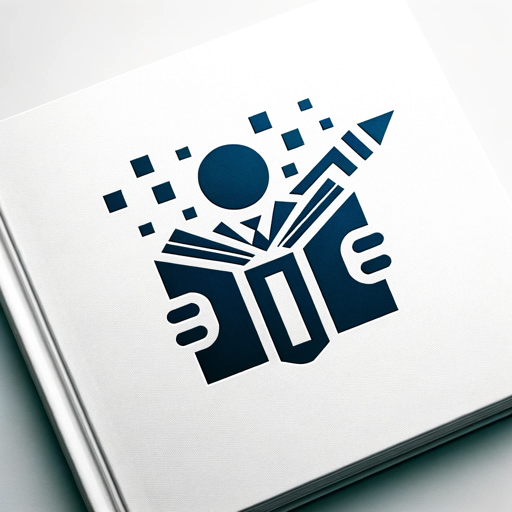CVEs-CVE vulnerability information
AI-powered CVE insights and solutions
Look up Common Vulnerabilities and Exposures (CVEs).
What is CVE-2022-2007?
What is CVE-2022-2006?
When was CVE-2023-33003 published?
Related Tools

CV & Resume - Evaluator (ATS)
CV & Resume - Evaluator (ATS) - Evaluates a CV or Resume against any job description and scores the CV or Resume out of 100 for job fit across 5 distinct categories. Get real time feedback on your CV or Resume helping you get the job you want. Updated:

CISO AI
Team of experts assisting CISOs, CIOs, Exec Teams, and Board Directors in cyber risk oversight and security program management, providing actionable strategic, operational, and tactical support. Enhanced with advanced technical security architecture and e

GP(en)T(ester)
A cybersec assistant for pentesting guidance.

Ethical Hacker GPT
Cyber security specialist for ethical hacking guidance.

h4ckGPT
Your personal security tool

BugBountyGPT
AppSec & Bug Bounty
20.0 / 5 (200 votes)
Introduction to CVEs
Common Vulnerabilities and Exposures (CVEs) is a list of publicly disclosed information security vulnerabilities and exposures. Created to provide a standardized identifier for each known vulnerability, the purpose of CVEs is to facilitate the sharing of data across different security tools and databases. Each CVE entry contains an identification number, a description of the vulnerability, and references for further information. For example, CVE-2021-34527, also known as 'PrintNightmare,' is a vulnerability in the Windows Print Spooler service that could allow remote code execution. By providing a unique identifier for this vulnerability, CVEs make it easier for organizations to track and remediate this specific security issue across their systems.

Main Functions of CVEs
Standardized Identification
Example
CVE-2021-44228, a critical vulnerability in the Apache Log4j library.
Scenario
An organization uses a variety of security tools, including intrusion detection systems and vulnerability scanners. By using the CVE identifier CVE-2021-44228, all these tools can recognize and address the same vulnerability consistently, ensuring coordinated and efficient remediation efforts.
Facilitate Information Sharing
Example
Security advisories from vendors like Microsoft or Cisco referencing specific CVEs.
Scenario
A system administrator receives a security advisory from Microsoft that references multiple CVEs affecting their software. The administrator can cross-reference these CVEs with their vulnerability management system to prioritize patching and mitigate risks promptly.
Support Vulnerability Management
Example
Vulnerability management tools like Tenable or Qualys integrating CVE data.
Scenario
A cybersecurity team uses a vulnerability management tool that integrates CVE data to scan their network for known vulnerabilities. The tool identifies CVEs present in their systems and provides detailed information and remediation steps, helping the team to systematically address and reduce security risks.
Ideal Users of CVEs Services
Cybersecurity Professionals
Cybersecurity professionals, including security analysts and incident responders, rely on CVEs to identify and respond to vulnerabilities within their organization's infrastructure. They benefit from the standardized information and the ability to quickly understand the impact and remediation steps for specific vulnerabilities.
System Administrators
System administrators use CVEs to manage the security of the systems and software they oversee. By referencing CVE entries in security advisories and patch releases, they can prioritize their efforts to address the most critical vulnerabilities affecting their environment, ensuring system stability and security.

How to Use CVEs
Visit aichatonline.org
Visit aichatonline.org for a free trial without login, also no need for ChatGPT Plus.
Search for CVE ID
Enter the CVE ID or related keyword in the search bar to find detailed information about specific vulnerabilities.
Analyze the Data
Review the CVE details, including descriptions, impacts, affected products, and available solutions to understand the scope and severity of the vulnerability.
Implement Solutions
Apply the recommended solutions or workarounds provided in the CVE details to mitigate or resolve the vulnerability in your systems.
Monitor Updates
Regularly check for updates on the CVE entries to stay informed about any new developments, patches, or mitigation strategies.
Try other advanced and practical GPTs
Product Coach
AI-Powered Product Management Excellence

Cocktail MixMaster
AI-powered mixology at your fingertips.

RubyGPT
AI-driven tool for Ruby developers

AI Website Builder by B12
Effortlessly create stunning websites with AI.

Learn Creole
AI-Powered Guadeloupean Creole Mastery

Storyteller
AI-Powered Writing Assistance for All

Disagree with Me
AI-Powered Counterarguments for Deeper Insight.

Kube Guide
AI-powered Kubernetes management made easy

Flashcard Generator
AI-Powered Flashcard Generation for Efficient Learning

MemeCraft
AI-powered meme creation made easy

Gerrit for Chromium
AI-powered code review for Chromium

BibleGPT
AI-powered biblical insights

- Research
- Compliance
- Incident Response
- Threat Analysis
- Vulnerability Management
Frequently Asked Questions about CVEs
What is a CVE?
A CVE, or Common Vulnerabilities and Exposures, is a standardized identifier for a known cybersecurity vulnerability, providing a reference for the public to access information and mitigation strategies.
How can I find a specific CVE?
You can find a specific CVE by searching for its ID or related keywords on platforms like aichatonline.org or other CVE databases, which provide detailed information about each vulnerability.
What information does a CVE entry contain?
A CVE entry typically includes a description of the vulnerability, its impact, affected products, available solutions or workarounds, and links to additional resources or references.
Why are CVEs important for cybersecurity?
CVEs are crucial for cybersecurity as they provide a standardized method for identifying and sharing information about vulnerabilities, enabling organizations to quickly respond and mitigate potential threats.
Can CVEs help in compliance with security standards?
Yes, CVEs help in compliance with various security standards and regulations by providing documented evidence of known vulnerabilities and the steps taken to address them, aiding in risk management and audit processes.